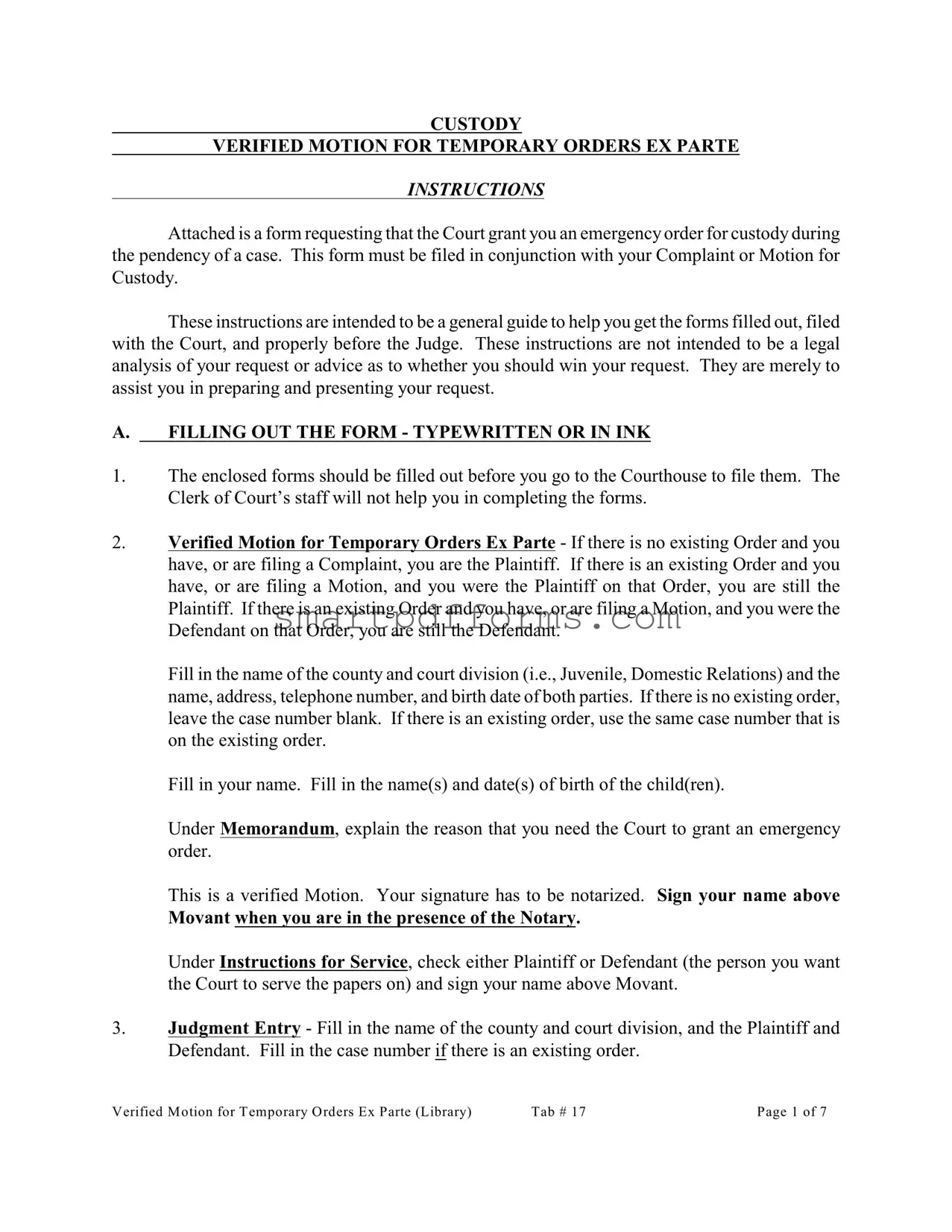CUSTODY
VERIFIED MOTION FOR TEMPORARY ORDERS EX PARTE
INSTRUCTIONS
Attached is a form requesting that the Court grant you an emergency order for custody during the pendency of a case. This form must be filed in conjunction with your Complaint or Motion for Custody.
These instructions are intended to be a general guide to help you get the forms filled out, filed with the Court, and properly before the Judge. These instructions are not intended to be a legal analysis of your request or advice as to whether you should win your request. They are merely to assist you in preparing and presenting your request.
A.FILLING OUT THE FORM - TYPEWRITTEN OR IN INK
1.The enclosed forms should be filled out before you go to the Courthouse to file them. The Clerk of Court’s staff will not help you in completing the forms.
2.Verified Motion for Temporary Orders Ex Parte - If there is no existing Order and you have, or are filing a Complaint, you are the Plaintiff. If there is an existing Order and you have, or are filing a Motion, and you were the Plaintiff on that Order, you are still the Plaintiff. If there is an existing Order and you have, or are filing a Motion, and you were the Defendant on that Order, you are still the Defendant.
Fill in the name of the county and court division (i.e., Juvenile, Domestic Relations) and the name, address, telephone number, and birth date of both parties. If there is no existing order, leave the case number blank. If there is an existing order, use the same case number that is on the existing order.
Fill in your name. Fill in the name(s) and date(s) of birth of the child(ren).
Under Memorandum, explain the reason that you need the Court to grant an emergency order.
This is a verified Motion. Your signature has to be notarized. Sign your name above
Movant when you are in the presence of the Notary.
Under Instructions for Service, check either Plaintiff or Defendant (the person you want the Court to serve the papers on) and sign your name above Movant.
3.Judgment Entry - Fill in the name of the county and court division, and the Plaintiff and Defendant. Fill in the case number if there is an existing order.



